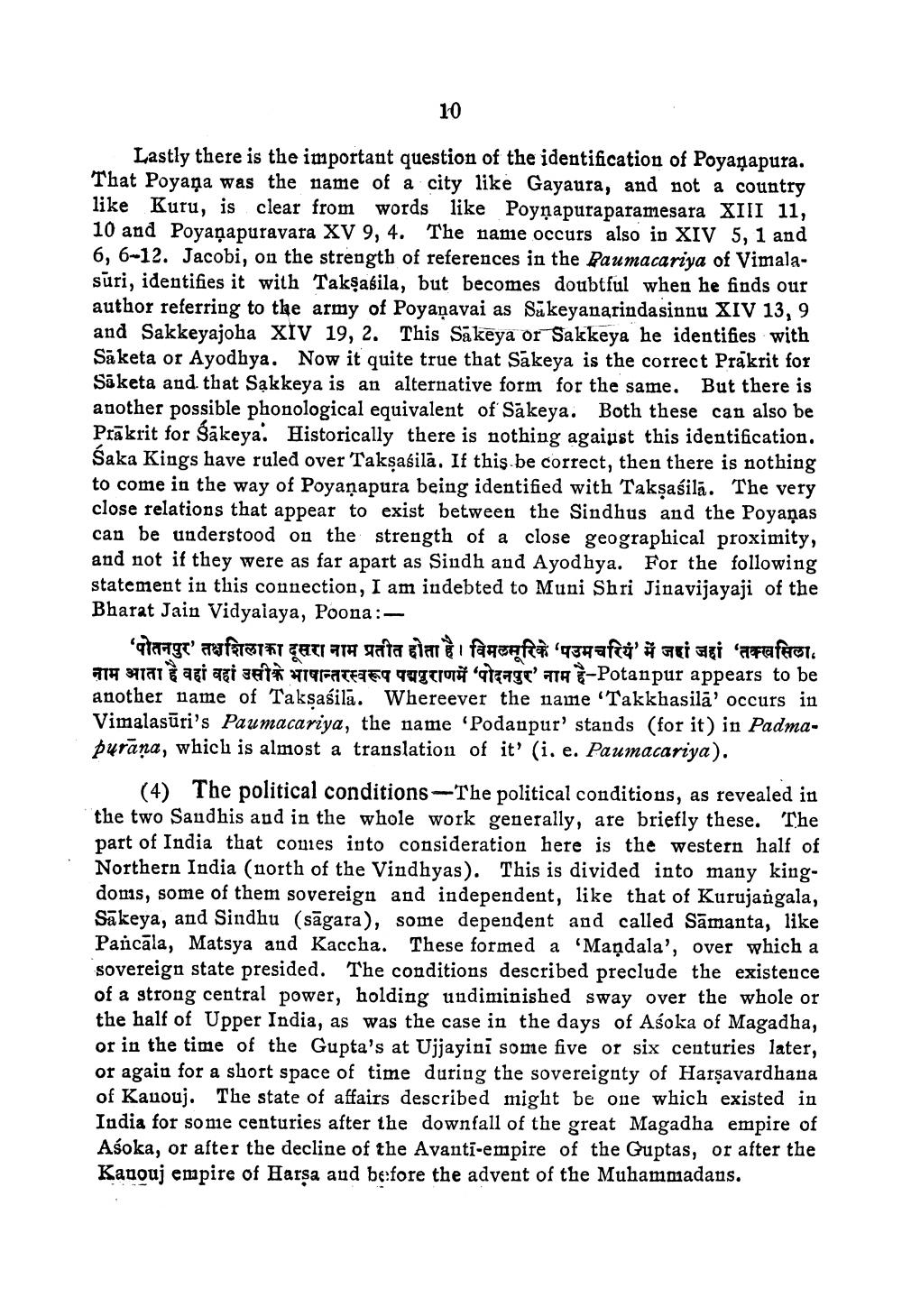________________
10
Lastly there is the important question of the identification of Poyanapura. That Poyaņa was the name of a city like Gayaura, and not a country like Kuru, is clear from words like Poynapuraparamesara XIII 11, 10 and Poyaņapuravara XV 9, 4. The name occurs also in XIV 5, 1 and 6, 6-12. Jacobi, on the strength of references in the Raumacariya of Vimalasūri, identifies it with Takşabila, but becomes doubtful when he finds our author referring to the army of Poyaṇavai as Sūkeyanarindasinnu XIV 13,9 and Sakkeyajoha XIV 19, 2. This Sakeya or Sakkeya he identifies with Saketa or Ayodhya. Now it quite true that Sakeya is the correct Prakrit for Säketa and that Sakkeya is an alternative form for the same. But there is another possible phonological equivalent of Sakeya. Both these can also be Prākrit for Säkeya: Historically there is nothing against this identification. Saka Kings have ruled over Takşasila. If this be correct, then there is nothing to come in the way of Poyaņapura being identified with Taksasila. The very close relations that appear to exist between the Sindhus and the Poyaņas can be understood on the strength of a close geographical proximity, and not if they were as far apart as Sindh and Ayodhya. For the following statement in this connection, I am indebted to Muni Shri Jinavijayaji of the Bharat Jain Vidyalaya, Poona:
_ 'पोतनपुर' तक्षशिलाका दूसरा नाम प्रतीत होता है। विमलमूरिके 'पउमचरियं' में जहां जहां 'तक्खसिला. नाम आता है वहां वहां उसीके भाषान्तरस्वरूप पद्मपुराणमें 'पोदनपुर' नाम है-Potanpur appears to be another name of Taksasila. Whereever the name 'Takkhasila' occurs in Vimalasūri's Paumacariya, the name 'Podanpur stands (for it) in Padmapurāna, which is almost a translation of it' (i. e. Paumacariya).
(4) The political conditions -The political conditions, as revealed in the two Saudhis and in the whole work generally, are briefly these. The part of India that comes into consideration here is the western half of Northern India (north of the Vindhyas). This is divided into many kingdonis, some of them sovereign and independent, like that of Kurujangala, Sakeya, and Sindhu (sāgara), some dependent and called Sämanta, like Pancāla, Matsya and Kaccha. These formed a 'Mandala', over which a sovereign state presided. The conditions described preclude the existence of a strong central power, holding undiminished sway over the whole or the half of Upper India, as was the case in the days of Asoka of Magadha, or in the time of the Gupta's at Ujjayini some five or six centuries later, or again for a short space of time during the sovereignty of Harşavardhana of Kauouj. The state of affairs described might be one which existed in India for some centuries after the downfall of the great Magadha empire of Asoka, or after the decline of the Avanti-empire of the Guptas, or after the Kauouj empire of Harsa and before the advent of the Muhammadans.




